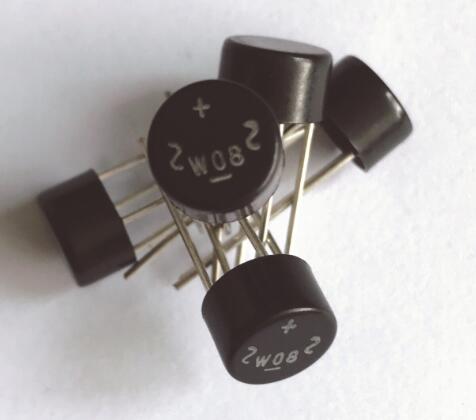Published time:2022-06-28 traffic:
As a basic electronic component, diode is known by all engineers to have single conductivity. According to the classification of semiconductor materials, it can be divided into silicon diodes and Germanium Diodes; According to the application classification, it can be divided into rectifier diode, detector diode, switching diode and zener diode. No matter how it is divided, Xiaobian believes that one parameter of the diode is very important, which will directly affect whether the transistor will be damaged due to overload.
Dissipated power
Dissipation power is also called the maximum allowable collector dissipation power PCM, which refers to the maximum collector dissipation power when the transistor parameter change does not exceed the specified allowable value. It is the difference between the total active input power and the total active output power of the grid elements or the whole network at a certain time. Under the linear condition, the calculation of the conduction dissipation power is relatively simple, PD = I2R, or PD = U2 / R; In the switching state, the calculation is relatively complicated.
The dissipation power of the diode is related to the allowable temperature. The maximum allowable temperature of the silicon diode is 150 ℃, while the maximum allowable temperature of the germanium is 85 ℃. The working temperature of the semiconductor is limited. When the actual power increases, the temperature will also increase. When the temperature reaches 150 ℃, the power at this time is the maximum dissipation power. Of course, there is also a certain relationship between the dissipation power and the package size. Generally, the maximum dissipation power of the device with a large package is relatively large. The most common is that the high-power device has a large volume and a large area of heat dissipation metal surface.
The power dissipation of a specific type of diode is related to the test conditions, such as the test ambient temperature and heat dissipation conditions. Generally, the maximum dissipation power measured is at 25 ℃. With the increase of the ambient temperature, the maximum dissipated power will decrease, because the heat conduction temperature difference under this condition will become smaller. For example, at 25 ℃, the dissipated power of a diode can reach 1W, and at 75 ℃, the dissipated power may become 0.4W. The maximum allowable dissipation power is related to the heat dissipation conditions. The better the heat dissipation conditions, the higher the dissipation power. At the same ambient temperature, the dissipation power is 1W. After adding the heat sink, the dissipation power may become 1.7w.
One parameter characterizing heat dissipation measures is thermal resistance. Thermal resistance is a comprehensive parameter reflecting the ability to prevent heat transfer. Thermal resistance is similar to the resistance in electronics, and it is a reference quantity reflecting the size of "blocking ability". The smaller the thermal resistance, the stronger the heat transfer ability; On the contrary, the larger the thermal resistance, the smaller the heat transfer capacity. From the perspective of analogy, heat is equivalent to current, temperature difference is equivalent to voltage, and thermal resistance is equivalent to resistance. Wherein, thermal resistance RJA: the total thermal resistance between the heat source of the chip and the surrounding cooling air, the unit is ℃ / W, which indicates the temperature difference between the two ends of the heat conduction at 1W.

Jiangsu Shunye Electronics Co., LTD
Company address:No. 18, Changfeng Road, Rulin Industrial Park,Jintan District, Changzhou City, Jiangsu Province, China Wechat
Wechat
 Mobile station
Mobile station